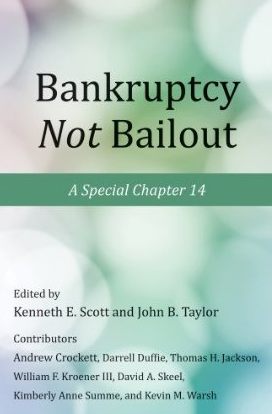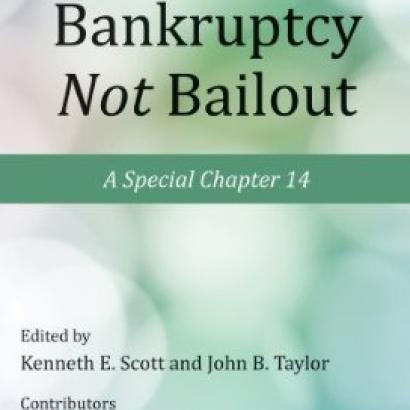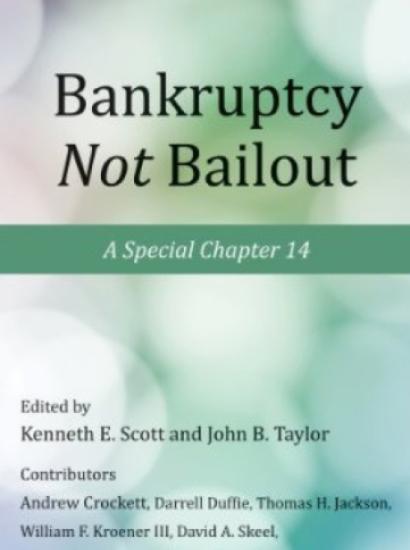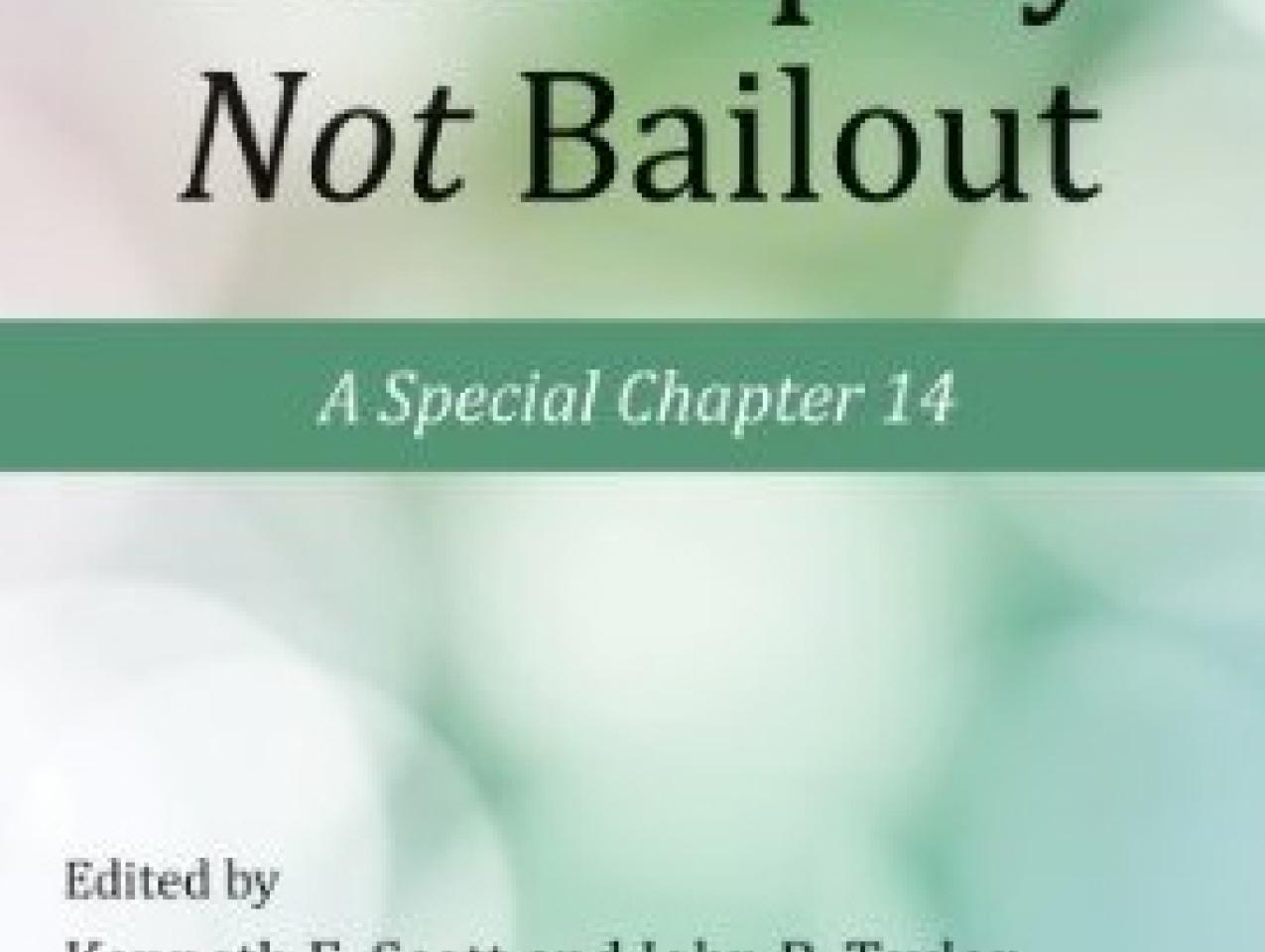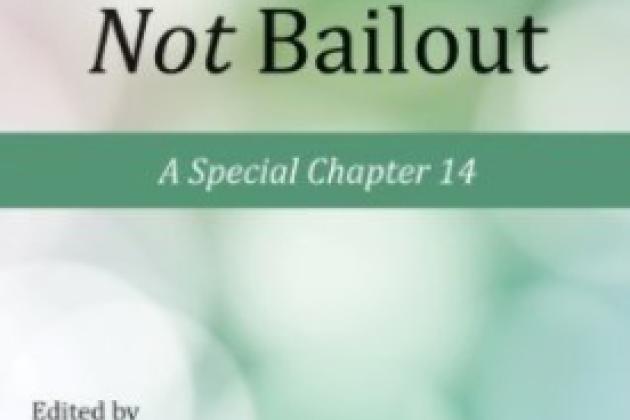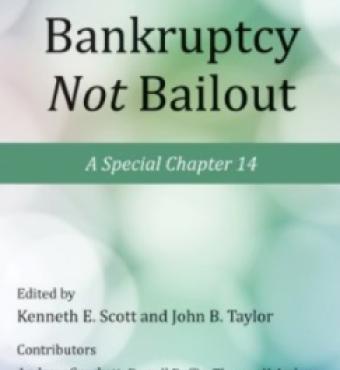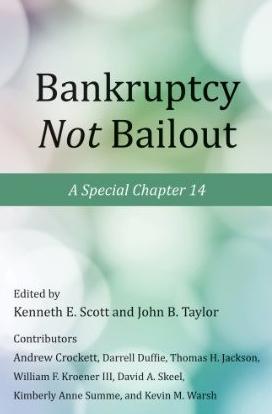- Economics
- Budget & Spending
- Monetary Policy
- Law & Policy
- Regulation & Property Rights
Publication Date: September 2012
Fixing Dodd-Frank—a new proposal for bankruptcy law
The events of the last several years on Wall Street make a compelling case for comprehensive, fundamental reform in the oversight of financial firms. In Bankruptcy Not Bailout, a group of expert contributors show why, if a new addition to the bankruptcy laws—Chapter 14—were implemented along with other genuine reforms, the changes could strengthen the US financial system and provide the impetus the US economy needs to thrive once again.
The authors reveal the weaknesses in Dodd-Frank Title II, showing how the current law creates an elaborate, and potentially cumbersome, bureaucratic procedure for triggering seizure of a financial company—and tell why Chapter 14 could greatly improve that process, creating greater financial stability and reducing the likelihood of bailouts. They lay the groundwork for a return to a clearer, more rules-based oversight regime that relies more on real capital and true market forces and urge adoption of a Chapter 14 even were Dodd-Frank left untouched.
Kenneth E. Scott passed away in June 2016. He was a Hoover Institution senior research fellow and the Ralph M. Parsons Professor Emeritus of Law and Business at Stanford Law School. He chaired the Resolution Project at the Hoover Working Group on Economic Policy and was a leading scholar in the fields of corporate finance reform and corporate governance who wrote extensively on federal banking regulation.
John B. Taylor is the George P. Shultz Senior Fellow in Economics at the Hoover Institution, chairs the Hoover Working Group on Economic Policy, and is the Mary and Robert Raymond Professor of Economics at Stanford University.
Contributors: Andrew Crockett, Darrell Duffie, Thomas Jackson, William F. Kroener III, David Skeel, Kimberly Anne Summe, and Kevin M. Warsh
Copyright 2012.
Download PDFs of individual chapters below.
Preface
by John Taylor
Chapter 1: A Guide to the Resolution of Failed Financial Institutions
by Kenneth E. Scott
Chapter 2: Bankruptcy Code Chapter 14
by Thomas H. Jackson
Chapter 3: Comment on Orderly Liquidation under Title II of Dodd- Frank and Chapter 14
by William Kroener III
Chapter 4: An Examination of Lehman Brothers’ Derivatives Portfolio Postbankruptcy
by Kimberly Anne Summe
Chapter 5: A Dialogue on the Costs and Benefits of Automatic Stays
by Darrell Duffie and David Skeel
Chapter 6: The Going- Concern Value of a Failed SIFI Dodd- Frank and Chapter 14
by Kenneth E. Scott and Thomas H. Jackson
Chapter 7: Dodd- Frank: Resolution or Expropriation?
by Kenneth E. Scott
Chapter 8: Regulatory Reform
by Kevin M. Warsh
Chapter 9: A Macroeconomic Perspective
by Andrew Crockett







